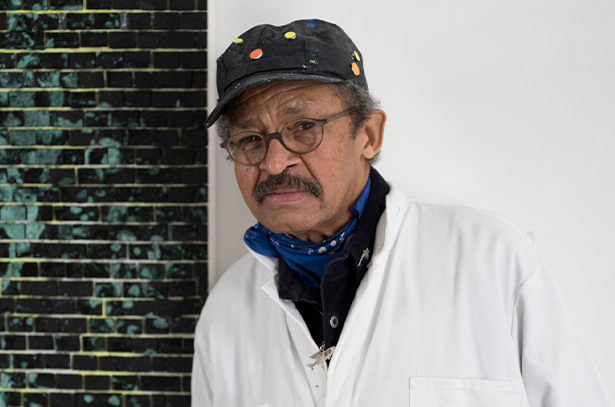
Arshile Gorky &
Jack Whitten
20 May 2020
Online Exhibition
About the Artists

Jack Whitten
Born in Bessemer, Alabama in 1939, Jack Whitten is celebrated for his innovative processes of applying paint to the surface of his canvases and transfiguring their material terrains. Although Whitten initially aligned with the New York circle of abstract expressionists active in the 1960s, his work gradually distanced from the movement's aesthetic philosophy and formal concerns, focusing more intensely on the experimental aspects of process and technique that came to define his practice.
The subtle visual tempos and formal techniques embedded in Whitten's work speak to the varied contexts of his early life. After a brief period studying medicine at the Tuskegee Institute in Alabama in the late 1950s, Whitten pivoted his attentions to art, first attending the Southern University in Baton Rouge before moving to New York and enrolling at The Cooper Union for the Advancement of Science and Art in 1960, where he earned his BFA degree.
In the 1970s, Whitten's experiments with the materiality of paint reached a climax—removing a thick slab of acrylic paint from its support, Whitten realized that the medium could be coaxed into the form of an independent object. Whitten used this mode of experimentation to challenge pre-existing notions of dimensionality in painting, repeatedly layering slices of acrylic ribbon in uneven fields of wet paint to mimic the application of mosaic tessarae to wet masonry. Over the course of a six decade career, Whitten's work bridged rhythms of gestural abstraction and process art, arriving at a nuanced language of painting, which hovers between mechanical automation and intensely personal expression.

Arshile Gorky
Arshile Gorky was born an ethnic Armenian in Khorkom, Van, Ottoman Empire (present-day Türkiye) in c. 1904. Fleeing the genocide that claimed the life of his mother, he immigrated to the United States as a teenage refugee in 1920. After four years with relatives in Massachusetts, Gorky moved to New York and changed his name in honor of the celebrated Russian poet. Refusing all categories, whether artistic or political, as necessarily reductive, Gorky forsook assimilation in favor of celebrating his otherness, becoming a central figure of the cultural milieu of a city on the brink of Modernism.
After a decade of working in New York, where he achieved a prominent position as a leading artist, Gorky initiated a series of studies and paintings observed from nature while on holiday in Connecticut first, and then over two summers at a farm in Virginia. Frequently returning to fragmentary and idealized elements of his early life, Gorky incorporated memories from his childhood as well as his adult fears and desires, among the reality of his surroundings.
Current Exhibitions
1 / 12















